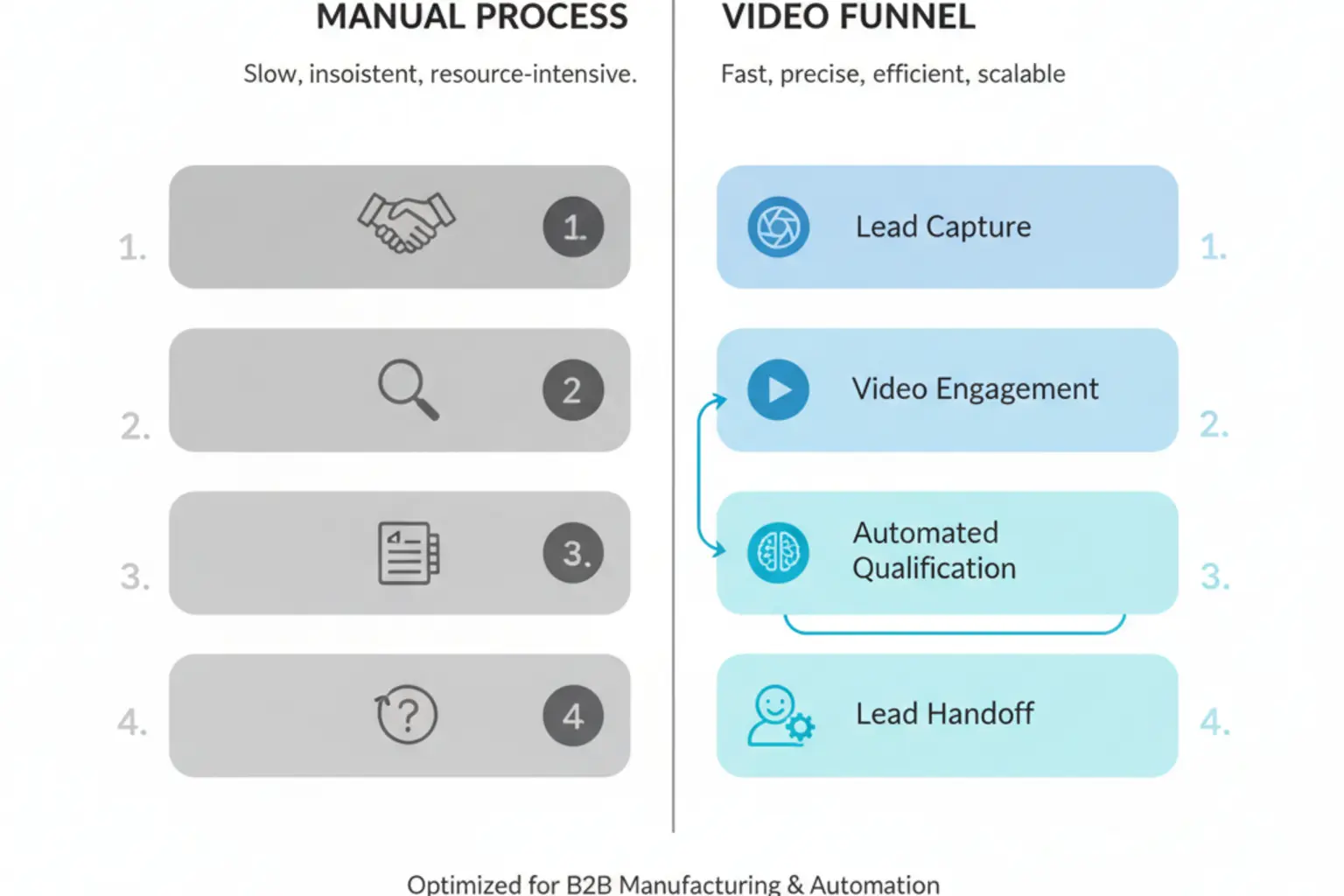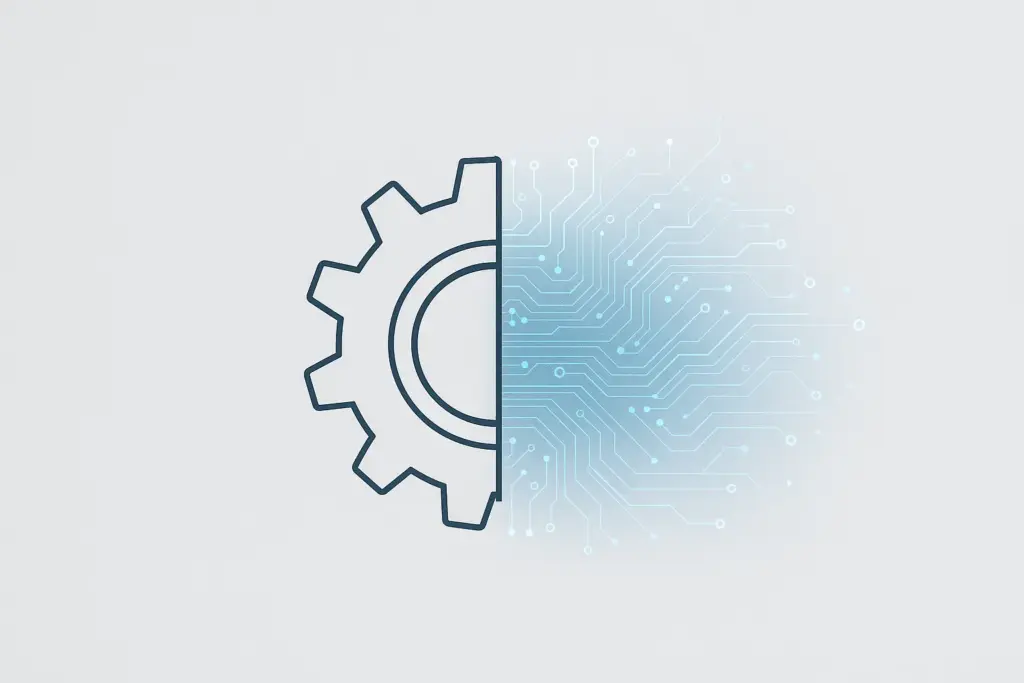You’ve read the high-level guides from IBM and Salesforce. You know AI automation is reshaping industries. But as an agency leader, you’re looking for more than abstract concepts.
You need tangible proof—a real-world example of how a small team can achieve explosive growth, especially in a traditional sector. You’re evaluating partners and need to see a clear, repeatable path to success, not just a list of features.
This is that story. It’s about how a German machinery manufacturer, J.v.G. Technology GmbH, went from the ashes of a failed business to over €8 million in revenue with just two people. They didn’t hire a massive sales team. Instead, they built an AI-powered automation engine that did the work of 6-8 full-time employees.
This case study breaks down the exact framework they used—a model executed invisibly by a white-label SEO services partner. It’s the blueprint for lean scaling that the big tech reports don’t show you.
The Collapse and the Rebirth: A Crisis Breeds Innovation
The success of J.v.G. Technology GmbH grew out of the failure of its predecessor company. The old model was traditional: a large sales team, manual processes, and high overhead. When it collapsed, the founders faced a critical choice: rebuild the same way and risk the same fate, or pioneer a new, radically efficient approach.
They chose innovation. Their vision was a lean, resilient business that could scale without the exponential costs of hiring. They rebuilt with a digital-first, automation-centric philosophy guided by a simple but powerful principle: replace manpower with machinepower.
The Strategy: Replacing Manpower with Machinepower
The goal was to automate up to 80% of their sales and marketing processes. This wasn’t about simply adding a few tools; it was about designing an entire ecosystem where AI could handle lead generation, qualification, and nurturing. This freed the two-person team to focus solely on closing high-value, pre-qualified deals.
This strategy aligns with a key finding from Accenture, which projects that AI can increase manufacturing productivity by 40% or more. J.v.G. decided to apply that same logic to their growth engine. They built a system that could intelligently manage the entire top and middle of the sales funnel.

The AI-Powered Sales Engine in Action
Handling over 50 inbound leads per day with just two people sounds impossible. But J.v.G. made it a reality by implementing a sophisticated, multi-layered automation system. Here’s how the core components worked together.
The Automated Video Funnel
The first touchpoint for most leads was an automated video funnel. Instead of a salesperson spending 30 minutes on an initial discovery call, a series of targeted, interactive videos educated prospects and answered their most common questions. The system tracked engagement, automatically segmenting leads based on which videos they watched and how they interacted.
This process pre-qualified leads with ruthless efficiency. Only the most engaged prospects, who had already consumed key information, were advanced to the next stage. It converted a time-consuming manual task into a 24/7 automated process.
Smart Email Workflows & Static Voicemail
Once a lead was qualified by the video funnel, a sequence of smart emails took over. These weren’t generic blasts. They were context-aware messages triggered by user behavior, designed to nurture interest and guide prospects toward a sales conversation.
Complementing this was an ingenious static voicemail system. If a prospect called and didn’t reach a person, they wouldn’t hear a generic “we’ll call you back” message. Instead, the system intelligently routed them based on their needs, often directing them to a resource that answered their question instantly—further qualifying them without any human intervention.
AI Voice Agents: The Digital Frontline
For leads who needed a more direct interaction but weren’t yet ready for a senior salesperson, J.v.G. deployed AI-powered voice agents. These conversational AI bots could handle initial phone inquiries, book appointments, and gather critical information.
They provided instant, human-like responses, ensuring no lead was ever lost while capturing the necessary details to prepare the human team for a final, high-impact sales call. This fusion of automation and personalized interaction was the key to managing immense lead volume with a skeleton crew.

The Results: Quantifiable Growth and Unprecedented Efficiency
The success of this AI-driven model wasn’t just theoretical; the numbers speak for themselves. Over six years, J.v.G. Technology GmbH achieved:
- Explosive Revenue Growth: From €1 million to over €8 million annually.
- Massive Operational Leverage: The two-person team consistently managed the lead flow and sales pipeline of a company 10x its size.
- Drastic Cost Reduction: The automation engine effectively replaced the need for 6-8 full-time sales and marketing staff.
- Sustainable Scaling: The system’s success enabled the launch of an entirely new business—without hiring a single additional employee.
This case study is more than just a success story—it’s a roadmap. Download the full PDF to get a deeper technical breakdown of the workflows, tools, and strategies that powered this transformation.
Download the Full Case Study PDF
The Invisible Partner: How JVGLABS Made It Possible
So, how did a two-person manufacturing company build such a sophisticated sales and marketing engine? They didn’t. They focused on what they do best—machinery and client relationships—while their agency partner delivered the results.
And behind that agency was JVGLABS.
We operated as the invisible execution team. While the agency managed the client relationship and high-level strategy, we designed, built, and optimized the entire AI-powered SEO automation and sales funnel. Everything from technical audits to campaign reporting was delivered under the agency’s brand.
That’s the power of a true white-label partnership. The agency scales its capabilities, delivers incredible results, and retains full client control, while we handle the complex execution, making you the hero.

FAQ: Answering Your Questions on AI-Driven Scaling
As you consider this model for your own agency and clients, a few questions naturally arise.
Is this level of automation too complex for traditional clients?
Not at all. The beauty of a white-label model is that the complexity is managed behind the scenes. For the client, the experience is seamless. They don’t see the intricate workflows; they see qualified leads, booked appointments, and revenue growth. Your agency presents the results while we handle the technical heavy lifting.
How does a white-label partner maintain our brand’s voice?
Our entire model is built on being invisible. We work from your strategic briefs and brand guidelines to ensure every email, report, and deliverable perfectly reflects your agency’s tone and identity. We are your team, operating under your banner.
What’s the real ROI of replacing staff with an AI engine?
Beyond direct salary savings, the ROI comes from scalability and consistency. An AI engine works 24/7 without fatigue, never misses a follow-up, and can handle nearly infinite lead volume without additional cost. This allows your agency to deliver predictable, scalable revenue for your clients through an omnichannel growth SEO strategy—a far more valuable proposition than just billable hours.
Your Path to Lean, Scalable Growth Starts Here
The story of J.v.G. Technology GmbH proves that the future of business growth isn’t about bigger teams; it’s about smarter systems. For agencies, the opportunity is immense. You can offer your clients a proven model for hyper-efficient scaling without the risk and expense of building a massive in-house automation and SEO department.
This case study provides the “how” so often missing from abstract industry reports. It’s a tangible, results-driven example of what’s possible when expert strategy meets powerful automation.
Ready to see the full picture? Download the complete case study for a granular look at the technology stack, workflow diagrams, and strategic insights you can apply to your own clients.

